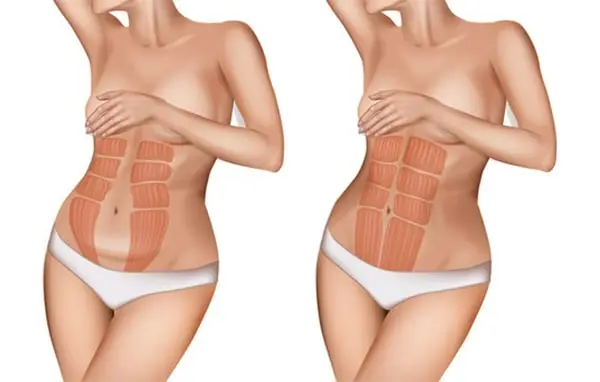Can You Gain Belly Fat After a Tummy Tuck?
When abdominal fat becomes stubborn and resists diet and exercise, a tummy tuck can effectively sculpt the abdomen and restore confidence. However, maintaining a balanced lifestyle and healthy eating habits post-procedure is crucial for optimizing and sustaining results. This operation offers numerous advantages, including a firmer abdomen, a reshaped waistline, and improved self-esteem, contributing to a better overall quality of life.
Tummy Tuck, Weight & Abdominal Wall
Abdominoplasty, or "tummy tuck," surgically removes excess skin and fat from the abdomen while strengthening the abdominal wall. It's particularly beneficial for those who've lost significant weight – through diet, exercise, or post-pregnancy – correcting skin laxity and weakened muscles. Stable weight before surgery is essential; significant fluctuations afterward can compromise results. Strengthening the abdominal wall improves appearance and overall health by supporting internal organs and posture. A healthy lifestyle with proper nutrition and regular physical activity post-surgery is recommended for optimal outcomes.
EXPRESS QUOTE
Would you like more information?
Your health, our priority.
Request your free quote
Factors Influencing Belly Fat Regrowth After Abdominoplasty
Belly fat regrowth after abdominoplasty depends on several factors beyond the surgery itself. Understanding these is key to optimizing results and maintaining a pleasing figure long-term.
Lifestyle and Diet
A healthy lifestyle and balanced diet are crucial for maintaining abdominoplasty results. Post-procedure, a nutrient-rich diet (fruits, vegetables, lean proteins, whole grains) is essential, avoiding processed foods and saturated fats. Regular exercise aids weight management and abdominal muscle toning, preventing skin laxity and maintaining firmness. Combining healthy eating and exercise significantly reduces the risk of belly fat regrowth.
Genetic and Metabolic Factors
Genetic and metabolic factors influence belly fat regrowth. Some are genetically predisposed to abdominal fat storage, making it harder to maintain a flat stomach even after surgery. Individual metabolism affects fat burning and response to dietary changes. Therefore, some may struggle to maintain results despite a healthy lifestyle due to these biological factors. Consider these when planning post-operative care.
Impact of Pregnancy and Weight Fluctuations
Pregnancy and weight fluctuations significantly impact abdominoplasty results. Postpartum women may experience abdominal laxity due to hormonal changes and skin stretching. Significant weight changes (restrictive diets or overeating) cause skin distension and weakened abdominal walls. Stabilize weight before surgery and discuss future family plans with your surgeon to determine the ideal procedure timing.

Preventing Belly Fat Regrowth After Abdominoplasty
Preventing belly fat regrowth after an abdominoplasty is essential for maintaining results. This requires commitment to lifestyle and medical follow-up. Good eating habits, regular exercise, and adequate medical follow-up maximize surgical benefits and minimize fat regrowth.
Importance of a Balanced Diet
A balanced diet is fundamental. Consume various nutritious foods: fruits, vegetables, lean proteins, healthy fats, and whole grains. A high-fiber diet aids digestion and prevents bloating. Limit added sugars and saturated fats, which contribute to weight gain. Meal planning and home cooking promote healthier choices, avoiding processed food temptations.
Role of Regular Exercise
Regular exercise is essential. Post-recovery, combine cardiovascular activities (brisk walking, swimming) with abdominal muscle-strengthening exercises. This burns calories, strengthens muscles, and improves posture. Regular exercise promotes a healthy metabolism, preventing excessive weight gain. Start slowly, gradually increasing intensity and duration according to your surgeon's recommendations.
Post-Operative Medical Follow-Up
Post-operative follow-up ensures optimal healing and prevents belly fat regrowth. Follow-up appointments assess healing and address concerns. These visits provide opportunities to discuss lifestyle habits and necessary changes to maintain results. Personalized diet and exercise advice is helpful. Proactive follow-up identifies and resolves problems early, ensuring successful and lasting recovery.
How to Avoid Weight Gain After a Tummy Tuck?
Avoiding weight gain post-abdominoplasty requires a long-term commitment to a healthy lifestyle. A balanced diet (fruits, vegetables, lean proteins, whole grains) is essential, avoiding foods high in added sugars and saturated fats. Regular exercise (cardio and muscle strengthening) maintains metabolism and tones abdominal muscles. Regularly monitor weight to address any gain promptly. Support from healthcare professionals or nutritionists provides personalized advice. Maintain hydration and manage stress, as these influence weight. Following these principles maximizes abdominoplasty results and maintains a pleasing figure.
What to Do If You Regain Belly Fat?
If belly fat returns after abdominoplasty, act quickly to prevent worsening. Several steps assess the situation and determine solutions. A proactive approach restores the desired figure and maintains overall health.
Consult a Healthcare Professional
Consult a healthcare professional (doctor or plastic surgeon) to assess belly fat regrowth causes (weight changes, dietary habits, or other factors). Address all concerns, lifestyle changes, and health issues impacting weight gain. They provide tailored advice and recommendations for an effective action plan.
Available Treatment Options
Treatment options include dietary and exercise modifications (specific nutritional programs or targeted exercises). Follow-up with a nutritionist or sports coach may be recommended. For significant regrowth unmanaged conservatively, additional surgical interventions (new abdominoplasty or other aesthetic procedures) may be considered. Evaluate all options with a healthcare professional to choose the best approach.